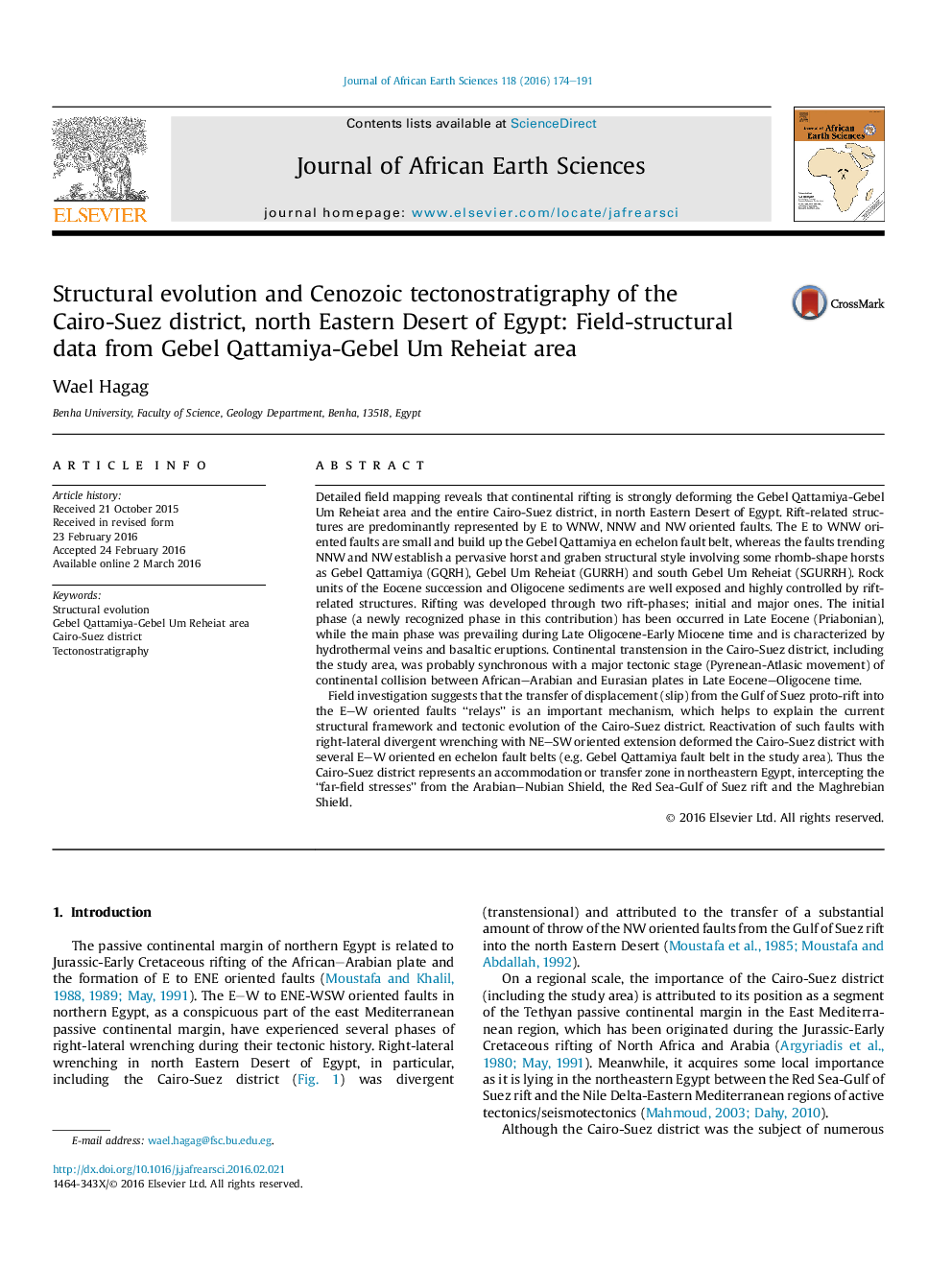| کد مقاله | کد نشریه | سال انتشار | مقاله انگلیسی | نسخه تمام متن |
|---|---|---|---|---|
| 4728434 | 1640190 | 2016 | 18 صفحه PDF | دانلود رایگان |
• Lithostratigraphy and tectonic setting of the Cairo-Suez district of Egypt is apparently controlled by rifting.
• Rift-related structures are represented by a horst and graben structural pattern.
• Two rifting phases were prevailing during Late Eocene (Priabonian) and Oligocene-Miocene, where the earlier phase has not been documented elsewhere in Northern Egypt.
• Initiation of rifting was coeval with a Pyrenean-Atlasic movement, of a continental collision between African–Arabian and Eurasian plates.
Detailed field mapping reveals that continental rifting is strongly deforming the Gebel Qattamiya-Gebel Um Reheiat area and the entire Cairo-Suez district, in north Eastern Desert of Egypt. Rift-related structures are predominantly represented by E to WNW, NNW and NW oriented faults. The E to WNW oriented faults are small and build up the Gebel Qattamiya en echelon fault belt, whereas the faults trending NNW and NW establish a pervasive horst and graben structural style involving some rhomb-shape horsts as Gebel Qattamiya (GQRH), Gebel Um Reheiat (GURRH) and south Gebel Um Reheiat (SGURRH). Rock units of the Eocene succession and Oligocene sediments are well exposed and highly controlled by rift-related structures. Rifting was developed through two rift-phases; initial and major ones. The initial phase (a newly recognized phase in this contribution) has been occurred in Late Eocene (Priabonian), while the main phase was prevailing during Late Oligocene-Early Miocene time and is characterized by hydrothermal veins and basaltic eruptions. Continental transtension in the Cairo-Suez district, including the study area, was probably synchronous with a major tectonic stage (Pyrenean-Atlasic movement) of continental collision between African–Arabian and Eurasian plates in Late Eocene–Oligocene time.Field investigation suggests that the transfer of displacement (slip) from the Gulf of Suez proto-rift into the E–W oriented faults ‘‘relays’’ is an important mechanism, which helps to explain the current structural framework and tectonic evolution of the Cairo-Suez district. Reactivation of such faults with right-lateral divergent wrenching with NE–SW oriented extension deformed the Cairo-Suez district with several E–W oriented en echelon fault belts (e.g. Gebel Qattamiya fault belt in the study area). Thus the Cairo-Suez district represents an accommodation or transfer zone in northeastern Egypt, intercepting the ‘‘far-field stresses’’ from the Arabian–Nubian Shield, the Red Sea-Gulf of Suez rift and the Maghrebian Shield.
Journal: Journal of African Earth Sciences - Volume 118, June 2016, Pages 174–191
